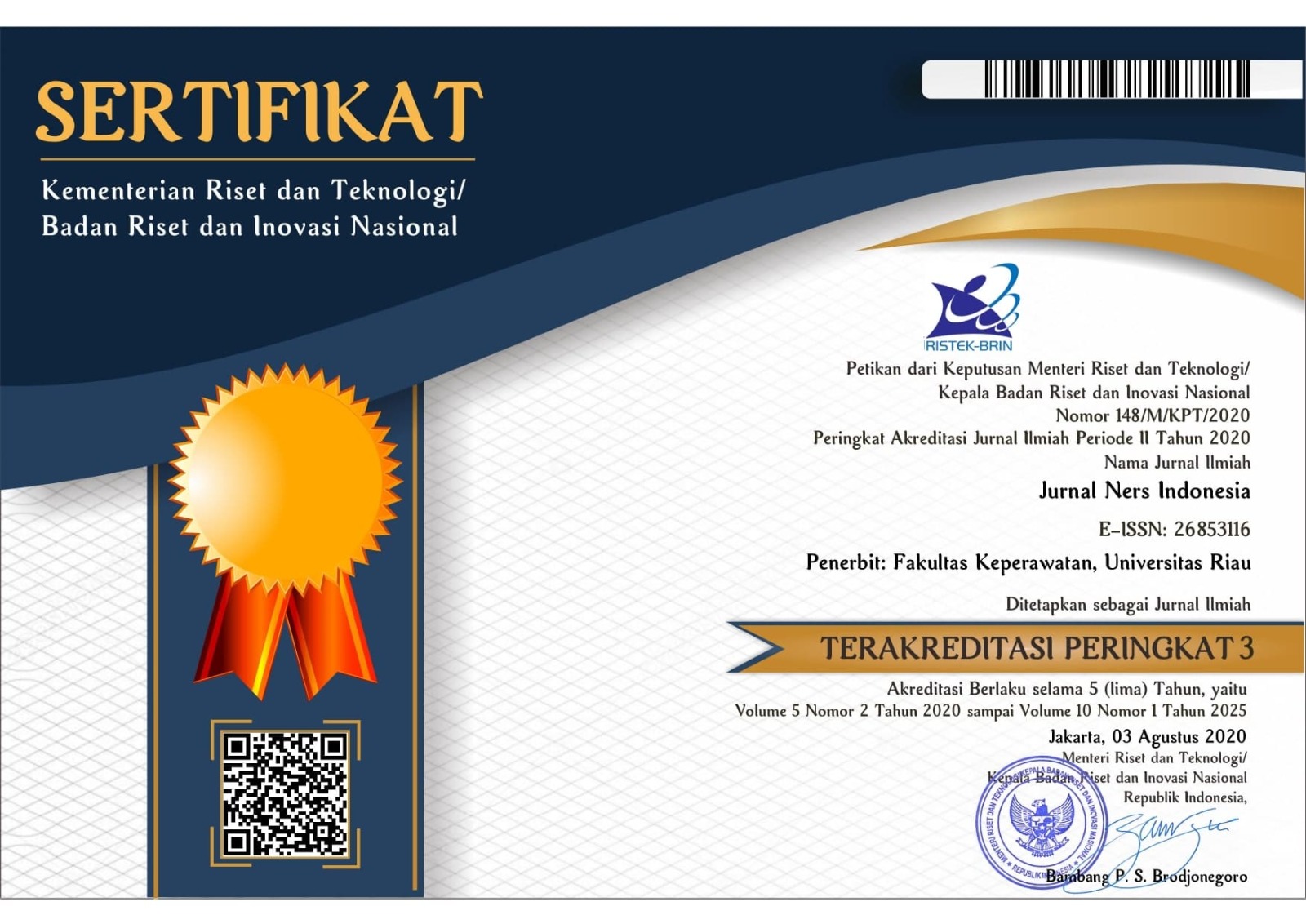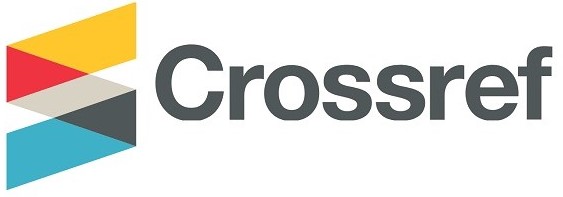FAKTOR PENYEBAB TINGKAT KECEMASAN DAN TINGKAT STRES PADA ANAK DIDIK PEMASYARAKATAN (ANDIKPAS)
Keywords:
Andikpas, Anxiety, Causative Factor, StressAbstract
Juvenile delinquency is one of the causes of criminal acts that can bring teenagers into the realm of law. Correctional Students (Andikpas) will be more vulnerable to experiencing anxiety and stress problems. This research is to identify factors that cause anxiety levels and stress levels in Andikpas aged 14-18 years. This research is quantitative with a descriptive design, the research location is LPKA Class II Pekanbaru. This research uses a standard questionnaire, namely the Depression Anxiety Stress Scale (DASS), with univariate analysis. The results of this study show that the average age of Andikpas is 18 years, the respondents of this study are male with a total of 57 (100%) respondents, 23 respondents (40.4%) are not in school, the most common type of case is sexual harassment 27 respondents (47.4% ), the detention period that Andikpas has served is an average of 5 months, 36 respondents (63.2%) stated that not being able to interact with the outside environment was the factor causing the highest level of anxiety and stress, for the level of anxiety 20 respondents (35.1%) experienced anxiety normal, 3 respondents (5.3%) mild, 14 respondents (24.6%) moderate, 9 respondents (15.8%) severe and 11 respondents (19.3%) very severe, for stress level 24 respondents (42.1%) experienced normal stress, 12 respondents (21.1%) mild, 17 respondents (29.8%) moderate, 3 respondents (5.3%) severe and 1 respondent (1.8%) very severe. So LPKA Class II Pekanbaru is expected to be able to collaborate with educational institutions or social institutions to carry out activities, improve the quality and professionalism of supervisory officers in training activities and seminars related to Andikpas development.
References
Agustine, E. M., Sutini, T., & Mardhiyah, A. (2018). Skrining Pembinaan Khusus Anak (LPKA) Kelas II Bandung. Jurnal Keperawatan Komprehensif (Comprehensive Nursing Journal), 4(1), 32–40.https://doi.org/10.33755/jkk.v4i1.96
Ariyanto, E. A. (2016). Tingkat Stress pada Remaja Di Lapas Anak Blitar. Persona:Jurnal Psikologi Indonesia, 5(03), 226–231. https://doi.org/10.30996/persona.v5i03.852
Atikasuri, M., Mediani, H. S. &, & Fitria, N. (2018). Tingkat Kecemasan pada Andikpas Usia 14-18 Tahun Menjelang Bebas di Lembaga Pembinaan Khusus Anak Kelas II. Journal of Nursing Care, 1(1), 78. https://doi.org/10.24198/jnc.v1i1.15773
Aulia, P. (2017). Terapi kelompok untuk mengurangi stres anak didik pemasyarakatan yang akan bebas. Jurnal RAP UNP, 8(1), 69–78.
Badan Pusat Statistik. (2021). Statistik Kriminal. Badan Pusat Statistik.
Bahiej, A. (2017). Pembinaan bagi Anak Didik Pemasyarakatan Pelaku Kejahatan Seksual di Lapas Anak Kutoarjo. 2 (2), 95–106.
Diananda, A. (2018). Psikologi remaja dan permasalahannya. ISTIGHNA, 1(1), 116–133
Idris, F. P. et al. (2020). Penggunaan Media Edukasi Video Terhadap Perubahan Tingkat Stress dan Depresi Pada Narapidana Remaja di LPKA Kelas II Maros Tahun 2020. 3 (1), 58–66.
Irawan, E., Tania, M. &, & Arifin, M. Z. (2020). Hubungan Dukungan Sosial dengan Tingkat Kecemasan Menjelang Bebas ( Studi Kasus : Lembaga Pembinaan Khusus Anak Kelas II Bandung ). VIII(1), 122–131.
Jayasinghe, A. (2014). Report on Mental Health Problems in Hambantota District Sri Lanka. World Health Organization Sri Lanka. Diambil dari https://mhpss.net/?get=123/148-%0AChild-Mental-Health-Problems-inHambantota-District-By-Dr.-%0AAnura-Jayasinghe
KPAI. (2020). No Title. Diambil dari https://bankdata.kpai.go.id/tabulasi-data/data-kasus-pengaduan-anak-2016-2020
Maurice-Szamburski, A., Loundou, A., Capdevila, X., Bruder, N., & Auquier, P. (2013). Validation of the french version of the amsterdam preoperative anxiety and inormatoin scale (APAIS). Healthand Quality of Life outcomes, 11(1), 1. https://doi.org/10.1186/1477-7525-11-166
Pakpahan, P. L & Habibah, U. (2021). Manajemen program pengembangan kurikulum PAI dan budi pekerti dalam pembentukan karakter religius siswa. Journal of Islamic Education, 2 (1), 1–20.
Priyoto. (2014). Konsep Manajemen Stress (1st Ed). Yogyakarta: Nuha Medika.
Sari, M. F. A. (2019). Proses Penyesuain Diri Narapidana Di Lembaga Pemasyarakatan Perempuan Kelas IIB Kota Bengkulu.
Sopiah, N. N., Krisnatuti & Simanjuntak, M. (2017). Kerentanan, strategi koping, dan penyesuaian anak di lembaga pembinaan khusus anak (LPKA). Jur. Ilm. Kel. & Kons, 10(3), 192–203.
Unayah, N., & Sabarisman, M. (2016). Fenomena Kenakalan Remaja Dan Kriminalitas. Sosio Informa, 1(2), 121–140. https://doi.org/10.33007/inf.v1i2.142
Downloads
Published
How to Cite
Issue
Section
License
Copyright (c) 2024 Dita Rustanti

This work is licensed under a Creative Commons Attribution 4.0 International License.











